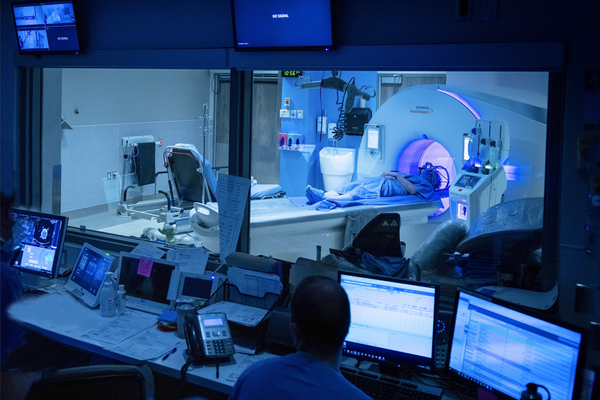Mobile Menu
- Education
- Research
-
Students
- High School Outreach
- Undergraduate & Beyond: Community of Support
- Current Students
- Faculty & Staff
- Alumni
- News & Events
- Giving
- About

In a study that has implications for understanding and treating pancreatic cancer, researchers at Sinai Health and the University of Toronto have identified new genetic players critical for tumour growth in the pancreas.
Led by Daniel Schramek, a senior Investigator at the Lunenfeld-Tanebaum Research Institute and deputy director of discovery research at Sinai Health, the researchers have identified two genes, USP15 and SCAF1, as tumour suppressors. People who have mutations in these genes are more likely to develop fast-growing tumours.
The team also found that mutations in USP15 and SCAF1 make tumours more susceptible to chemotherapy. This finding marks a significant step forward for a disease that has seen little progress in treatment options.
“While mutations in USP15 and SCAF1 make tumours more aggressive, they also sensitize tumours towards standard chemotherapy. And that means that you could stratify patients and they should have a better response to treatment,” says Schramek, who holds the Canada Research Chair in Functional Cancer Genomics at U of T’s Temerty Faculty of Medicine and the inaugural Tony Pawson Chair in Cancer Research at Sinai Health.
The project was spearheaded by a former postdoctoral fellow, Sebastien Martinez, who is now a senior scientist at Centre de Recherche en Cancérologie de Lyon (CRCL) in France. The journal Nature Communications published the results.
Pancreatic cancer continues to have few treatment options with devastatingly low survival rates, under five years post diagnosis. According to one estimate, pancreatic cancer could be the second leading cause of cancer deaths in the United States by 2040.
Schramek's team achieved their breakthrough by leveraging advances in genomic medicine, specifically tumor DNA sequencing, to identify mutations and genome editing technologies.
“Sequencing tumours allows you to find the genes that are affected and use that knowledge to develop treatments. But the problem is that every cancer has a plethora of mutations, and not all of them are disease-causing,” says Schramek, who is also an associate professor in the Temerty Faculty of Medicine’s department of molecular genetics.
Cancers often feature common mutated genes in many patients, along with hundreds of less frequent mutations that appear in a smaller subset. While mutations in USP15 and SCAF1 were found in fewer than 5 per cent of patients, their effect on cancer remained unclear.
Traditionally, tumour suppressor genes have been pinpointed by sequentially deleting genes in cancer cell lines and noting which deletions increase cell growth. However, these cell-based studies don't replicate the tumour's natural environment and interactions with the immune system, which are crucial for cancer progression. This likely explains why previous screens overlooked USP15 and SCAF1, according to Schramek.
A few years ago, Schramek's team developed a genome editing approach enabling them to remove hundreds of genes simultaneously from individual cells in a single mouse. This method helps identify genes that, when absent, trigger cancer in the natural body environment.
Utilizing this technology, the Schramek lab targeted 125 genes recurrently mutated in patient pancreatic tumors and pinpointed USP15 and SCAF1 as crucial tumor suppressors and potentially prognostic factors for chemotherapy response.
It just so happens that these genes are also absent in about 30% of patients due to common genomic rearrangements in cancer, as Schramek has found.
This finding indicates that as many as a third of pancreatic patients who lack these genes might benefit from chemotherapy and have better outcomes.
“Historically, mutations in USP15 and SCAF1 would have been considered less important because they are not found in many patients,” Schramek says.
“Our work shows that it is critical that we understand the functional consequences of these rare mutations as they can reveal new biology and therapeutic opportunities”
Anne-Claude Gingras, director of LTRI and vice-president of research for Sinai Health says, “This study represents an important step forward in our understanding of the genes involved in pancreatic cancer. It also shows how a cutting-edge technology developed at Sinai Health is enabling new discoveries with the potential to create benefits to patients.”
This research was supported by funding from the Ontario Institute of Cancer Research, the Wallace McCain Centre for Pancreatic Cancer supported by the Princess Margaret Cancer Foundation, the Terry Fox Research Institute, the Canadian Cancer Society Research Institute, Pancreatic Cancer Canada and the Canadian Institute of Health.

